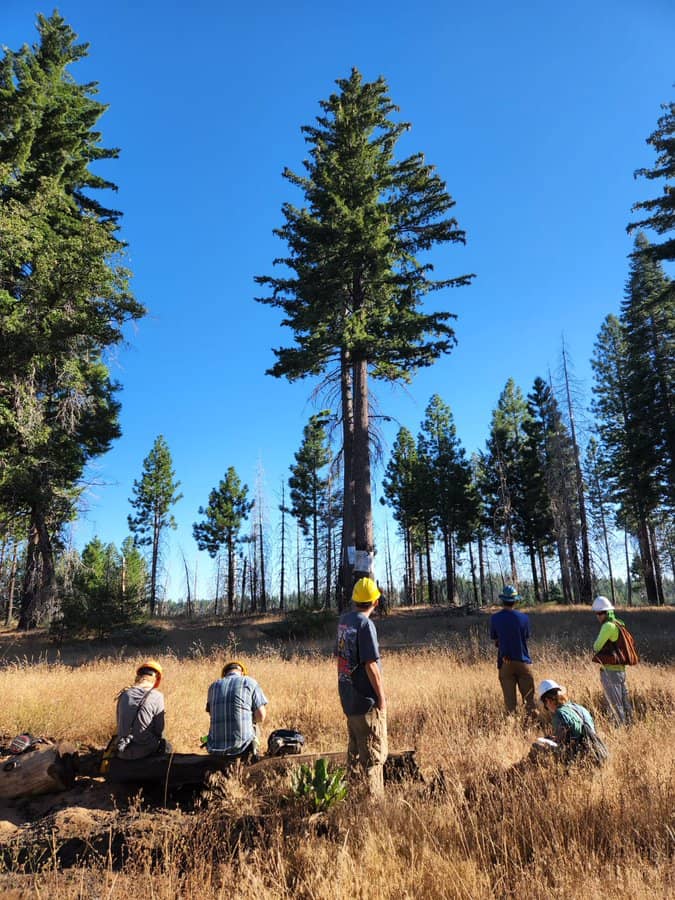Seed September is off with a bang! We sat down with Luis Vidal, Northern California reforestation manager for American Forests, in between his busy seed collection schedule to get the low-down on his recent field work. Read on to learn what it takes to collect pine cones and his hope for the future of California’s forests.
What do you do?
I am the Northern California reforestation manager for American Forests. My work relates to all aspects of the reforestation process including seed collection, site prep, planting and monitoring.
What have you been doing this past week?
This past week, I planned and implemented a cone collection process with the help of the U.S. Forest Service’s Eldorado National Forest and Region 5 genetics office. We collected over 130 bushels of cone totaling to over 200,000 individual seeds.

How do you go about it, and what is the complete process?
The seed collection process starts with cone surveying in early June, which indicates how the cone crop will look for the coming year. Through monitoring, we carefully select which trees or stands of trees we want to collect cones from. Cones will usually be ready to collect by mid-August to September. They require a professional tree climber to climb the trees and drop the cones for a ground crew to collect. These trees can sometimes reach heights of over 100 feet.
Why is this important?
This is the very first step of the reforestation process, the collection of seeds. The seeds are removed from the collected pine cones using a machine called an extractor. These are the seeds the nurseries will use to grow seedlings for reforestation following forest disturbances such as bark beetle kill and wildfires.
Why is timing so critical with cone collection?
Cone maturity is highly variable every year due to various factors, and the window to collect them is very small. Too early, the seed embryo may not be fully developed, resulting in poor seed growth. Too late, and the cones may begin dropping the valuable seeds you are trying to collect. For this year’s cone collection, we had approximately a one-and-a-half-week window to collect.

What would you most like people to understand about the cone/seed shortage in California?
Currently, we are not keeping pace with the scale of reforestation needed to address the loss of forest lands due to wildfire and other forest disturbances. To keep pace, the first step of the reforestation process is the one that needs the most attention and support: cone surveying and cone collection. Without those two, we will be unable to grow and plant the trees we need to reforest areas devastated by wildfire.
What is your vision and hope for California’s forests? What drives you to do this work?
After seeing many acres of California’s forests lost to wildfire over the past few years, I would like to see these forests grow back and be better than they were before. We are collecting seeds now for the forests of tomorrow, and those forests need to be both climate-smart and resilient to any threats they may face.
What can people do to help?
Everyone can help by educating themselves on the importance of cone collection and telling others about it. One good way to do this is by following American Forests on social media as we celebrate #SeedSeptember.